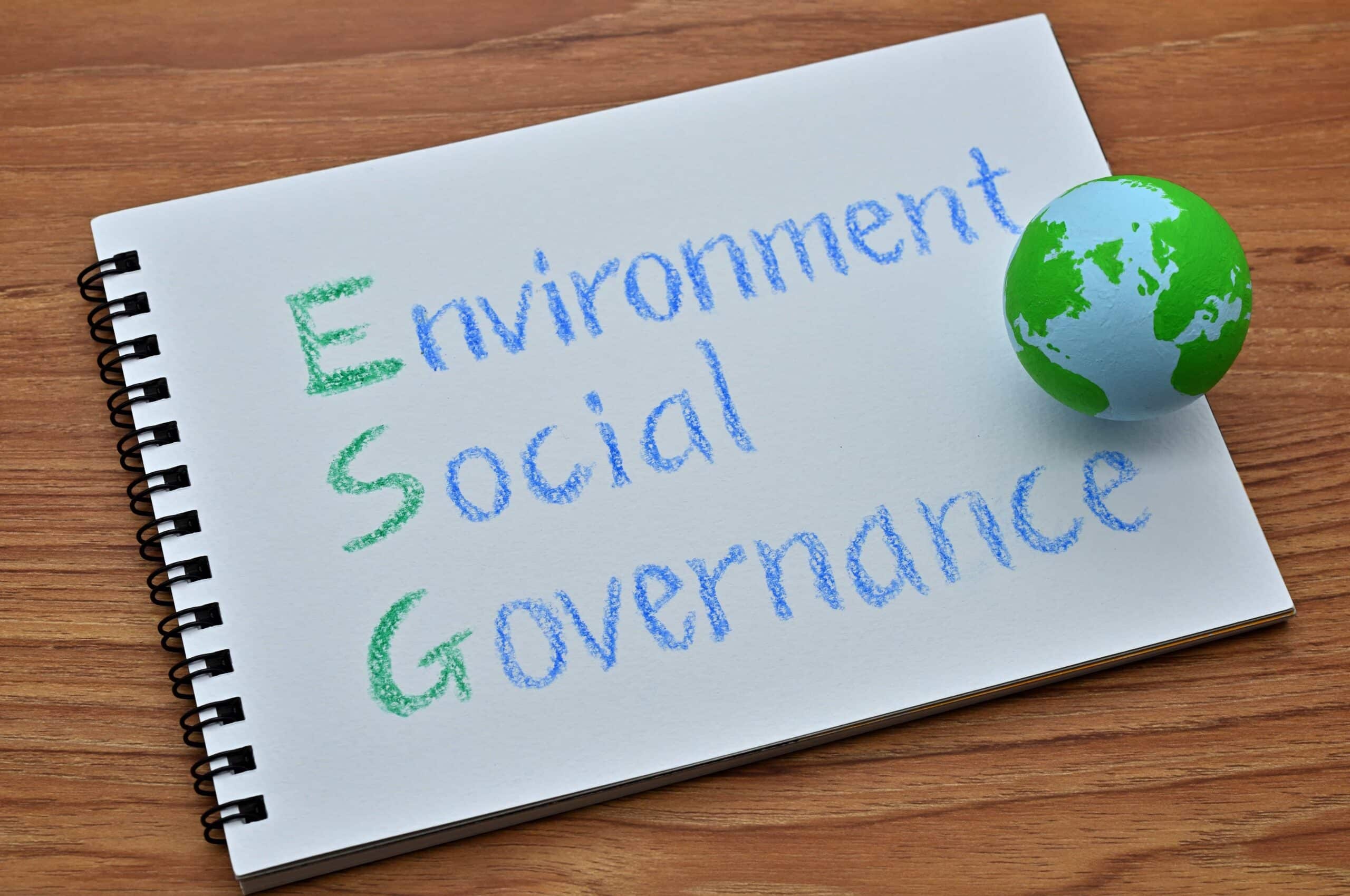|
Getting your Trinity Audio player ready...
|
The rise of Socially responsible investing
Since ESG’s inception by the United Nations in 2004, the environment has been in the spotlight. From its quiet beginnings, socially responsible investing has moved from being a niche interest to being a dominant theme among the leaders of international capital markets. This has led to sophisticated indices being developed by rating agencies and investment funds alike as they strive to incorporate metrics aligned with environmental performance, climate risk mitigation, and strategies toward renewable energy sources. ESG investing is here to stay!
A company’s resource utilisation, together with the impact of their operations on the environment, must be examined across both direct operations and supply chains. Impact investing demands a long-term examination of carbon footprint, waste management practices, energy efficiency, and a company’s overall approaches to environmental concerns.
The resultant ESG disclosures alongside an annual report frame potential investments in terms of risk and reward; a solid environmental report that can withstand scrutiny is invaluable. In short, corporate policies and practices that fail to consider the environmental consequences of an organisation’s activities risk exposure to higher levels of future financial risk.
ESG suffered a lack of common frameworks
ESG risks and opportunities were long hampered by a lack of a common framework for assessing the topic adequately. In the past, environmental considerations were viewed as incidental to economic growth. However, issues such as climate change, water scarcity, extreme temperatures, and overall emissions have threatened to stifle economic expansion. Today, with the near-universal acceptance of reporting frameworks such as the GRI (Global Reporting Initiative), we have an accessible standard to guide our total ESG reporting.
Environmental conditions can have a direct impact on a company’s ability to compete on a global scale. ESG investing is the practice of managing environmental, social, and governance risks and opportunities in addition to traditional financial returns. Such social criteria have shifted environmental factors such that they have become a critical measure as to whether an organisation is sufficiently well governed to be considered a responsible investment.
In recent years, the financial markets have increased their weighting of the environment when determining potential shareholder value. Investment portfolios have shed stocks when their risk assessment has shown a lack of alignment with sustainable investment best practices. As recent history has shown, criminal prosecution for a failure to deliver environmental protection ensures long-term reputational harm to any brand.
ESG ratings can determine viability
ESG factors serve as the foundation for evaluating a company’s long-term viability. However, the environmental portion of ESG considers the extent to which the company performs in its role as an environmental steward of the natural or physical environment.
When calculating a company’s score, the “E” factor considers the company’s use of natural resources as well as the impact of its operations on the environment, both in its direct operations and across its supply chains. The environmental factor looks at the disclosure made by the company about its environmental impact as well as its efforts to reduce carbon emissions, all of which are issues that present both tangible risks and opportunities for stakeholders as well as shareholders.
Companies that fail to consider the environmental consequences of their policies and practices may find themselves in a more precarious financial position because of their actions. If a company does nothing to reduce carbon emissions or protect against environmental incidents such as oil spills or mining explosions, it could be subjected to governmental or regulatory sanctions as well as legal and reputational consequences, all of which tend to have a negative effect on the value of its stock in the future.
Overpopulation
In addition to pollution, crowded living conditions and inadequate medical care are some of the environmental and social consequences of overpopulation. As a result, poor communities are more vulnerable to infectious diseases than they would otherwise be the case. As a result, there is an increased demand for resources such as food, water, and shelter, and fewer resources available to meet that demand.
Lack of food
As has been noted, an environmental impact is a consequence of a specific environmental issue or problem, often manifested through food scarcity. This has negative consequences for the environment as fewer resources are made available for shared consumption. Unsurprisingly, perhaps, but much deforestation occurs because of famine because more people are looking for firewood to burn or fields to farm and the environment’s ability to absorb carbon diminishes as a result.
Lack of water
Water scarcity is becoming a more serious problem around the world, and it will have direct consequences for both nature and humans. Water scarcity will almost certainly lead to an increase in poverty and mass migration, as well as increased regional pressure on natural resources and increased deforestation. Environmental degradation and climate change are among the most serious sustainability concerns for investors, with deforestation being the most visible and pressing manifestation of these twin dangers.
Agricultural pollution
Agriculture is the world’s most polluting industry, responsible for 23 percent of global greenhouse gas emissions and 71 percent of deforestation, respectively. Besides providing food for 22 percent of the world’s population, forests also serve as a carbon sink, accounting for 40 percent of all global CO2 emissions. Carbon emissions have been directly linked to a large portion of the climate change that we are currently experiencing, according to scientists. This includes an increase in the frequency of Category 4 and 5 storms, as well as the occurrence of rural forest fires and urban flash flooding.
Plastics and ESG investment
It is difficult to overstate the magnitude of the environmental consequences of plastic production, use, and disposal. Plastic has been around for a long time, but it was only in the 1960s that it became a worldwide obsession. In addition to being lightweight, it was found to be less expensive than other materials and could be moulded into virtually any shape. Over the last two decades, the global production and consumption of plastic have increased by orders of magnitude.
It is not only the production, use, and disposal of plastic that contribute to significant greenhouse gas emissions, but also the manufacture and decomposition of plastic that contribute. a specific mission (sGHG). Carbon dioxide (CO2) is the most significant greenhouse gas (GHG), but plastics also emit other gases such as methane and ethylene. Methane is a greenhouse gas that is 28 times more potent than carbon dioxide. In addition, because methane decomposes over a longer period in the environment, even small amounts of methane can have significant global warming consequences.
Plastics, in addition to contributing to greenhouse gas emissions, pose a threat to wildlife and waterways due to their tendency to break down into small pieces. It is believed that these particles are consumed by animals and enter the food chain, where they can be hazardous to human health. Another issue to consider is the performance of plastic in landfills: methane is collected under plastic liners and is collected for energy production. At each stage of the circular economy, design, repurpose, repair, and recycling are all viable options for solving problems. Some, if not all, of these can be incorporated into the Environmental section of your company’s environmental, social, and governance strategy.
Competition for water resources
Because climate change is having a negative impact on precipitation and soil moisture, there is more competition for water available. In fact, since 1950, the gross domestic product (GDP) has been found to be positively correlated with the total amount of water extracted. The greater the increase in GDP per capita, the greater the amount of water that is withdrawn from rivers and groundwater aquifers. This presents a problem because agriculture is a water-intensive activity that consumes the greatest amount of water, making it the largest consumer of water. As a result, businesses that rely on agriculture while also utilising water (directly or indirectly) must keep an eye on this variable to adequately anticipate and mitigate the risks associated with water scarcity.
Fresh water supplies have become increasingly vulnerable because of both rising demand and supply constraints, particularly those associated with climate change. Climate change and competition for water are having an impact on agriculture, which is the world’s largest consumer of water. However, it is also contributing to the degradation of the substrate, which reduces the ability of the land to trap and retain water. Because of this, agriculture-related businesses with direct operations and supply chains are at risk of experiencing water scarcity in their operations.
It is even more important to practice rigorous risk management when studying agricultural businesses because climate change, competition for land, and other factors have a direct impact on long-term viability. The problem of soil erosion is exacerbated by an increase in the amount of water available as a result of climate change. Aside from that, water scarcity can even act as a constraint on crop production, as was observed during the recent droughts in North America and Australia.
Fracking, methane, and (ESG) investing
Another issue that has become increasingly important to ESG investors is hydraulic fracturing, also known as fracking. Fracking is a method of extracting fossil fuels from shale rock formations that involves injecting high-pressure water and various chemicals into the rock formations in order to create cracks that allow natural gas and oil trapped within them to escape. The rapid increase in the number of wells drilled using hydraulic fracturing has resulted in a significant increase in carbon emissions on a global scale.
Methane is responsible for more than 75% of the emissions associated with natural gas production and distribution. Since 1990, the rate of methane leakage throughout the fracking process has been responsible for 25 percent of global warming over the last two decades. Methane is a greenhouse gas that is 84 times more harmful to the environment than carbon dioxide. Despite this, we continue to be completely reliant on companies engaged in shale gas extraction and related infrastructure to meet our energy needs.
ESG risks and investment in biodiversity
Biodiversity concerns the variety of living components that make up nature’s ecosystem. It contributes to the resilience of natural capital assets and the preservation of those assets for the future. Changes in land use and climate, as well as exploitation and pollution, are driving biodiversity and ecosystem decline.
There are many risks associated with common agricultural inputs used around the world, such as fertilisers and pesticides, but because these products will be used for both food and non-food applications – such as biofuels – the risks are often hard to distinguish.
Overpopulation and natural capital
However, while economic activity has increased by twofold over the past 50 years, population growth has increased by a factor of more than fourfold. It is important for businesses to have natural capital because it is the source of many of the products and services that we use daily.
Natural capital can be found, for example, in the food and beverage markets, on which 7 billion people rely for their survival to some extent. Currently, the greatest threat to the availability of such goods and services comes from over-exploitation of these natural systems, which is caused by human activities such as deforestation, pollution, and a lack of appreciation for the importance of biodiversity, amongst other things.
Supply chain security
Defining and quantifying environmental factors that affect your supply chain is equally important for your company as it is for any other company. This will aid in the attraction of investment, the building of consumer confidence, the building of employee confidence, and the provision of supply chain security.
Conclusions
If companies are pursuing long-term value creation, environmental, social, and governance approaches have the potential to reveal a significant amount of information about their management and resilience in accordance with sustainability, including physical climate risk and other environmental risks. It could also serve as an important market-based mechanism for assisting investors in making decisions based on long-term carbon prices and climate transition risks posed by climate mitigation policies implemented in response to the Paris Agreement, as well as for other purposes.
More work needs to be done to ensure that the E pillar provides investors with the insight they require to contribute to both long-term value and the greening of the financial system in the future. Independent of investor requirements, steps to improve transparency and market integrity will ensure that markets are efficient and resilient to contribute to a transition and deliver long-term value at the highest possible level.


